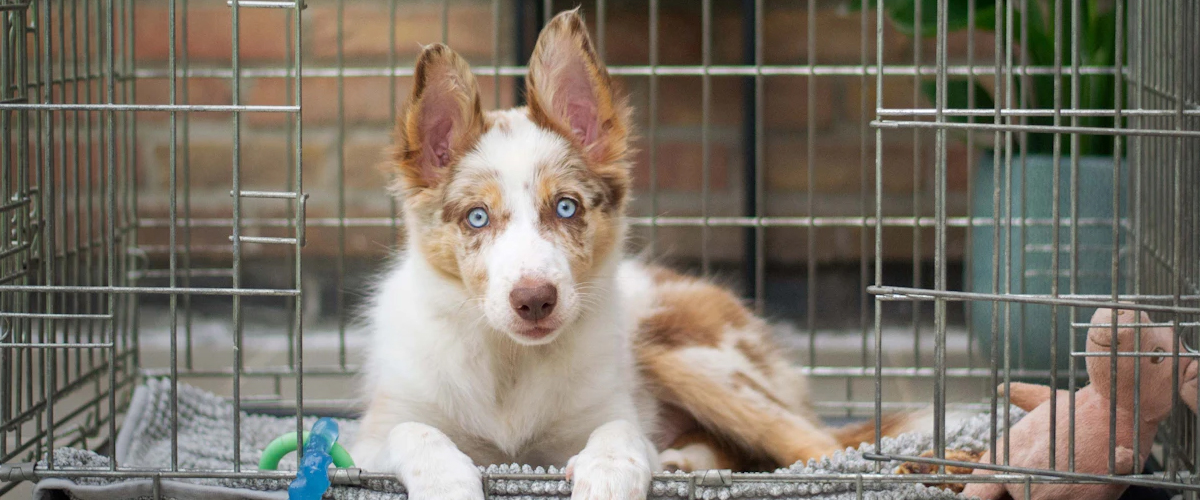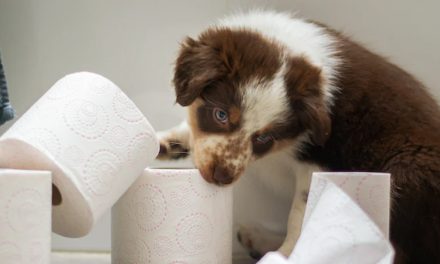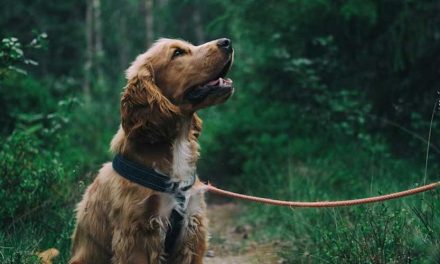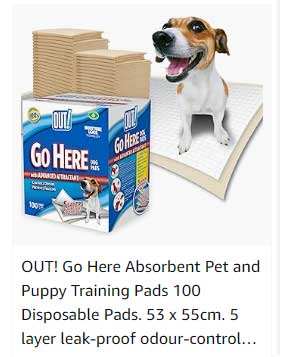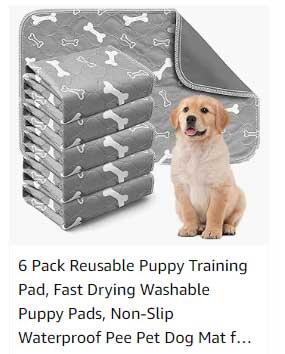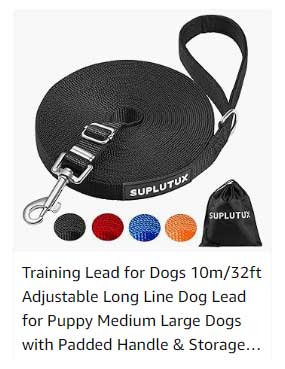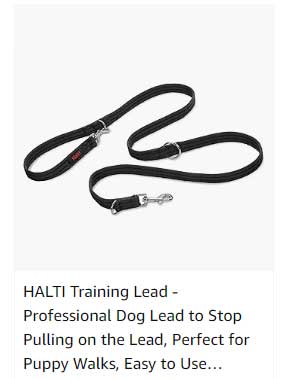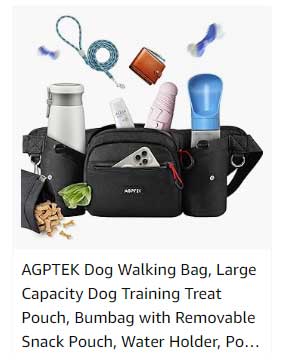Welcoming a new puppy into your home is an incredibly joyous occasion, full of moments that will create lasting memories. While the love and excitement are undeniably abundant, there is a practical side to ownership that must be addressed: training.
CRATE TRAINING BASICS
Crate training, when done correctly, is one of the most effective tools in fostering a disciplined and contented canine. In this comprehensive guide, we’ll take you through the why and how of crate training, ensuring that your new pup’s den becomes a valuable asset, a personal haven, and not a pen to punish.
UNDERSTANDING THE BASICS OF CRATE TRAINING
The explanations behind the incentive to crate train a puppy are numerous. Picture the crate as a secure, nurturing place where your pup can retire at times when they need to be alone, or when you need them to be secure (like when the vacuum cleaner comes out). By teaching your dog to associate the crate with positive experiences, you are establishing an environment of safety and comfort. Beyond its use as a housebreaking tool, crate training is instrumental in managing behavior and quality-of-life issues for both dog and owner.
THE PSYCHOLOGY BEHIND CRATE TRAINING
Canines are, at their core, denning animals. Historically, they feel most secure in enclosed spaces that offer a vantage point and a sense of protection. The crate mirrors this natural instinct, making it an appealing space for your puppy to rest and recover. To fully harness the potential of the crate, we need to tap into the psychological aspects of dog behavior and create a positive emotional response to being inside.
SETTING A PERSONALIZED TRAINING TIMELINE
Every puppy is different, and each will respond to crate training in their own time. It’s crucial to have patience and stay committed to a personalized training schedule. Understanding that setbacks are a natural part of the process enables you to adapt your plan to cater to your pup’s needs and personality.
METHODOLOGIES FOR EFFECTIVE CRATE TRAINING
Now that we comprehend the reasons and durations to crate train our puppies, it’s time to explore the methodologies that will ensure their acceptance and even approval of the crate. Here are step-by-step instructions to use as you and your puppy begin this training adventure.
THE SLOW AND STEADY APPROACH
Begin by introducing your puppy to the crate slowly, without any pressure. Place the crate in a central spot in your home, ensuring your puppy feels included in the family while being familiar with their “safe space.” Initial interactions should be brief, and you should always allow your puppy to investigate the crate at their own pace.
MAKING THE CRATE A HAPPY PLACE
Positive reinforcement is key during this phase. Associate the crate with good things by providing treats or toys inside. Feeding your pup near the crate can also build a more favorable association. Gradually, you may start using the crate for sleeping or calm, down-time. Ultimately, you want the crate to become your puppy’s desired location – a place they voluntarily enter.
ADDRESSING SEPARATION ANXIETY
Incorporating the crate into your training can also help manage separation anxiety. Ensure that every time you leave the house is not associated with going into the crate. Additionally, use the crate when you’re home for a few minutes at a time to help your puppy adjust to short periods of alone time. Slowly increase these time frames to build confidence and reduce anxiety.
CRATING FOR PRACTICAL BENEFITS
The applications for crate use extend beyond the confines of your home. A well-trained puppy who loves their crate is a pleasure to travel with, simplifying car journeys and hotel stays. The crate also serves as a portable safe haven, reducing any stress your puppy may feel when exposed to new environments or situations.
ADDRESSING BEHAVIOR MANAGEMENT
Crate training can be a valuable tool for addressing unacceptable canine behaviors. If you must step away or focus on tasks, placing your puppy in the crate will prevent unwanted explorations or potential destructive activities. It’s a preventative measure that not only keeps your belongings safe but also your puppy.
SUPPORTING HOUSETRAINING INITIATIVES
Crate training is renowned for its effectiveness in housetraining puppies. Dogs are naturally averse to soiling their living spaces, and the crate, being their den, reinforces this. It teaches your puppy to “hold it” during the night and when you’re away, essential for developing good elimination habits.
TROUBLESHOOTING AND OVERCOMING CHALLENGES
Even with the best of methods, challenges can arise during crate training. It’s important to troubleshoot, understand the source of the problem, and make the necessary adjustments to keep the process on track.
DEALING WITH CRYING AND WHINING
Puppies, especially those new to their new home, may exhibit signs of distress initially when being in the crate. It’s crucial to address these behaviors with patience and understanding. Avoid letting your puppy out when they are vocalizing to prevent them from associating whining with freedom. Instead, reassure them by sitting near the crate and speaking calmly until they settle. Utilize the crate regularly and consistently, making it a familiar and expected part of their daily routine.
AVOIDING NEGATIVE ASSOCIATIONS
Never use the crate as a tool for punishment or discipline. It should be a positive place, void of any negative associations. If your puppy hesitates to enter, do not force them. Instead, continue the slow and steady approach, and always ensure the crate is associated with the love and support they receive from you.
ADVANCED TIPS FOR OPTIMIZING CRATE TRAINING
To take your crate training to the next level, integrating advanced tips and techniques will add depth to your puppy’s relationship with their den space.
ESTABLISHING A RELEASE COMMAND
Create a release command that signals your puppy’s freedom from the crate, such as “free” or “release.” This step is an excellent way to give your puppy a sense of control and adds a behavioral expectation to their training regimen.
INCORPORATING EXTENDED PERIODS IN THE CRATE
Gradually increase the amount of time your puppy spends in the crate to prepare them for instances where they may be crated for more extended periods, such as during the workday or overnight. Use this time to make sure they have everything they need – toys, water, a comfortable bed.
THE LONG-TERM BENEFITS OF CRATE TRAINING
Long after your puppy has graduated from the ‘puppy’ stage, the benefits of their crate training will continue to enhance their life and relationship with you.
ALLEVIATING STRESS AND ANXIETY
The ability of the crate to act as a retreat for your puppy is invaluable as they grow and encounter new experiences. Whether it’s thunderstorms, fireworks, or simply needing a break from the hustle and bustle of home life, a familiar crate provides much-needed comfort.
TRAVELING WITH EASE
Crate training ensures that your dog can comfortably, and safely, accompany you on any adventure. The crate becomes a comforting constant in an otherwise changing environment, minimizing the stress of travel on your furry friend.
MAINTENANCE OF GOOD BEHAVIOR
A puppy accustomed to a crate understands the value of downtime. This crucial element of their routine acts as a moderating force on their behavior throughout the day, helping to maintain a level of calm and discipline.
FINAL THOUGHTS ON CRATE TRAINING YOUR PUPPY
While crate training may seem like a daunting task at first, it is an investment that yields rich dividends well into your dog’s adult years. The process requires patience, persistence, and an understanding of your puppy’s unique personality. By following the guidance laid out in this comprehensive guide, you can ensure that your pup’s crate becomes their cherished retreat, a space where they feel secure and content, no matter the circumstances. It’s about fostering a positive association with the crate through love, respect, and the occasional treat. Your puppy’s tail-wagging gratitude will be the ultimate sign of your successful training endeavors.
Credit: Original Photo by Ayla Verschueren on Unsplash

